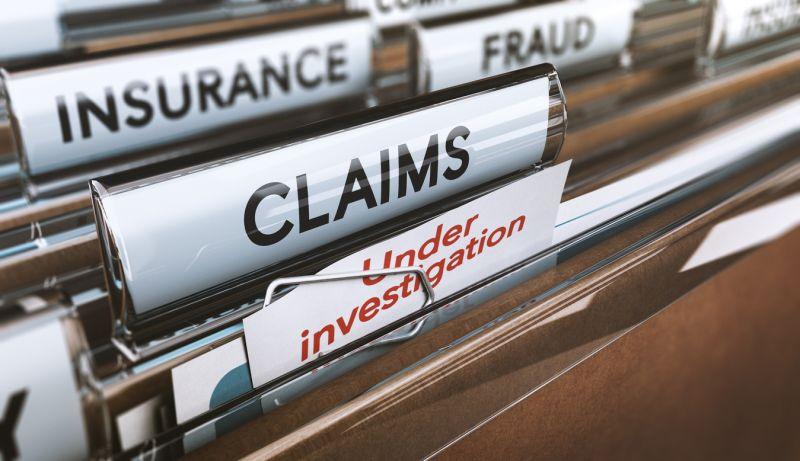In an increasingly complex financial landscape, safeguarding yourself against insurance claim scams has become a critical skill. These fraudulent activities not only threaten your financial well-being but also undermine trust in legitimate insurance processes. Understanding how to identify and avoid these scams is essential for protecting your assets and ensuring peace of mind. This guide offers a comprehensive overview of the tactics used by fraudsters, the red flags to watch for, and actionable steps you can take to shield yourself from becoming a victim. By arming yourself with knowledge and vigilance, you can navigate the insurance landscape with confidence and security.
Recognizing Common Red Flags in Insurance Scams
Insurance scams can be both intricate and deceptive, but understanding the telltale signs can protect you from falling victim. Here are some common red flags to be aware of:
- Unsolicited Contact: Be cautious of unexpected calls or emails from individuals claiming to be insurance agents, especially if they request personal information.
- Pressure Tactics: Scammers often use high-pressure tactics to rush you into making decisions. Genuine insurers allow you time to consider your options.
- Upfront Payments: Legitimate insurance companies do not require large upfront fees for claims processing. Be wary of any demands for immediate payment.
- Too-Good-To-Be-True Offers: Offers that promise unusually high returns or coverage at suspiciously low premiums should raise suspicion.
- Lack of Documentation: A legitimate insurance process involves ample paperwork. If an offer lacks proper documentation, it’s a red flag.
Always verify the authenticity of any insurance offer by contacting the company directly through official channels. Employing these precautionary measures can safeguard your interests and keep fraudulent activities at bay.

Verifying Authenticity of Insurance Representatives
When dealing with insurance representatives, it’s crucial to ensure their legitimacy to protect yourself from potential scams. Start by requesting their full name, company affiliation, and professional credentials. A legitimate representative should have no issue providing you with their license number and other identifying details. Use these details to verify their status through your state’s insurance department website, where you can confirm their credentials and check for any disciplinary actions or complaints.
Be vigilant about the communication channels they use. Legitimate representatives will typically communicate through official company email addresses or phone numbers. If you receive unexpected calls or emails, cross-reference these with the contact information listed on the company’s official website. Furthermore, be cautious if they request sensitive information upfront, such as your social security number or bank details. Authentic representatives will not ask for these details in initial conversations. Always insist on a face-to-face meeting at a legitimate office location if you have any doubts.
- Request and verify credentials through official channels.
- Check communication sources against official company information.
- Be wary of requests for sensitive personal information.
Implementing Secure Communication Practices
In today’s digital age, ensuring the security of your communications is paramount, especially when dealing with sensitive information like insurance claims. Secure communication practices can help shield you from scams that prey on vulnerabilities. Start by using encrypted messaging apps for any correspondence related to your insurance claims. These apps ensure that your messages are secure and can only be accessed by the intended recipient. Additionally, always verify the identity of the person you are communicating with by using a secondary method of verification, such as a phone call or a separate email confirmation.
- Use Encrypted Email Services: Platforms like ProtonMail or Tutanota offer end-to-end encryption, ensuring your emails are not intercepted.
- Regularly Update Passwords: Change your passwords frequently and ensure they are strong, incorporating a mix of letters, numbers, and symbols.
- Enable Two-Factor Authentication (2FA): Add an extra layer of security to your accounts to prevent unauthorized access.
- Avoid Public Wi-Fi: Refrain from accessing sensitive information or conducting transactions over unsecured networks.
By implementing these strategies, you significantly reduce the risk of falling victim to fraudulent schemes. Remember, maintaining vigilance and prioritizing secure communication channels are your best defenses against insurance claim scams.

Taking Proactive Steps to Safeguard Personal Information
In the digital age, safeguarding your personal information has never been more crucial. To protect yourself from insurance claim scams, it’s essential to be vigilant and proactive. Start by regularly reviewing your financial statements and insurance documents for any unusual activity or unauthorized claims. Be cautious about sharing your personal information, especially over the phone or online, unless you are certain of the recipient’s legitimacy. Consider using a password manager to generate and store strong, unique passwords for all your accounts.
- Monitor your credit report: Regularly check your credit report for any suspicious activity. This can help you catch unauthorized insurance claims early.
- Secure your online accounts: Enable two-factor authentication wherever possible. This adds an extra layer of security to your accounts.
- Educate yourself about phishing scams: Be aware of the common tactics used in phishing emails and messages. Never click on links or download attachments from unknown sources.
- Shred sensitive documents: Dispose of old insurance policies and statements properly by shredding them to prevent identity theft.
By implementing these measures, you can significantly reduce the risk of falling victim to insurance claim scams and ensure your personal information remains secure.
In Retrospect
safeguarding yourself against insurance claim scams requires vigilance, knowledge, and proactive measures. By staying informed about common scam tactics and maintaining open communication with your insurance provider, you can significantly reduce your risk of falling victim to fraudulent schemes. Always verify the legitimacy of any claims or offers you receive, and never hesitate to seek professional advice if something seems amiss. Remember, protecting your personal information and financial well-being is paramount. By implementing these strategies, you can confidently navigate the complex landscape of insurance claims and ensure that you are well-protected against potential scams. Stay informed, stay cautious, and empower yourself with the knowledge needed to safeguard your assets and peace of mind.

